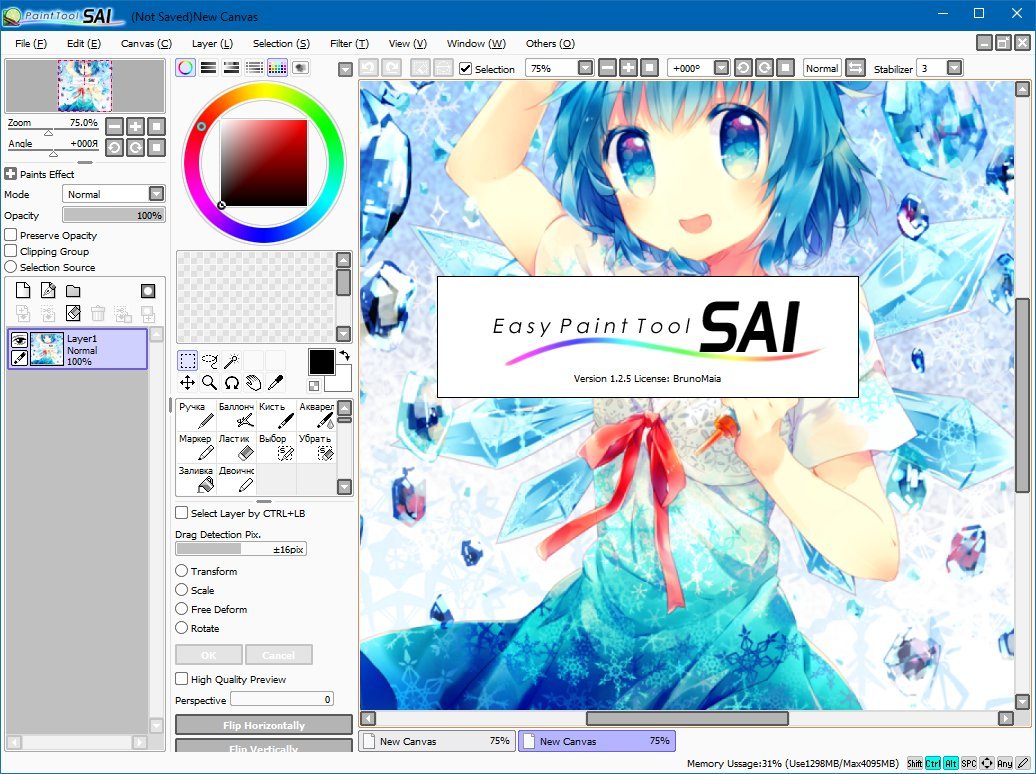
The Opacity and Pigment don’t really take an effect with pressure sensitivity, however, the size of each individual stroke within’ the brush reticule is effected by pressure sensitivity, making them larger with more pressure, and smaller with less pressure. Anyway, The strokes themselves can be a bit wavey as you brush. When you brush with this…brush, within’ the brush reticule, you’ll get various strokes, which is part of the point of this brush, and is one of the reasons for why I like SAI as much as I do. Now, strokes with this brush act different then strokes with the other brushes. So…yeah, this is the Acrylic Brush…quite a bit to be said here…WELL, first off each individual stroke with this brush has a texture, which is a bit of a wavey like pattern with the part of the stroke that has the most pigment forming the shape of waves, and being surrounded by anti-aliasing, except when the part of the stroke with the most pigment reaches an end of a stroke, then the anti-aliasing is only on one side, though, this doesn’t seem to give things a horrible look, which is a good thing. Well, in lieu of talking about it, and like I’ve done before…here’s an example of the Acrylic brush being used: So moving on, this tool is the Acrylic brush. With that said…I think I’ll throw in a brush that I do have something to talk about,

It may have to do with the colour, opacity, and pigment you get from the brush, if you manage to get some ACTUAL colour out of the damn things. Now…I honestly cannot see a difference between this tool and the Water 9 tool, I’m sure there is, but I just can’t seem to find it.

It is very similar to Water 9, and thus Water, but anyway.Īlright, so the Water 10 tool…since there’s not really much to say about this tool, here’s an example of it at work:

Soyeah…Water 10…more repeating tools, I guess.


 0 kommentar(er)
0 kommentar(er)
